![]()
![]()
![]()
Use LEFT and RIGHT arrow keys to navigate between flashcards;
Use UP and DOWN arrow keys to flip the card;
H to show hint;
A reads text to speech;
31 Cards in this Set
- Front
- Back
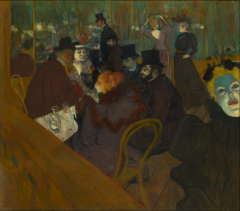
|
Henri de Toulouse-Lautrec, At the Moulin Rouge, 1892-1895, oil on canvas, Art Institute of Chicago, Chicago, Illinois.
In this painting, Henri, who was a "little person," wanted to put an emphasis on the facade of the dancers. The womans face n the right is May Milton. |
|
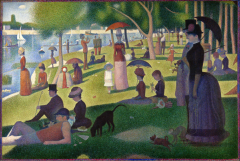
|
Georges Seurat, A Sunday on La Grande Jatte, 1884-1886, oil on canvas, Art Institute of Chicago, Chicago, Illinois.
Used pointillism to show color, shape, and form. Seurat believed that are was scientific in showing color and proportions. |
|
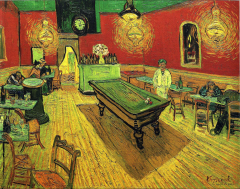
|
Vincent Van Gogh, Night Café, 1888, oil on canvas, Yale University Art Gallery, New Haven, Connecticut.
This painting shows man kinds vices, because of the perspective the table seems as though it's also leaning. |
|
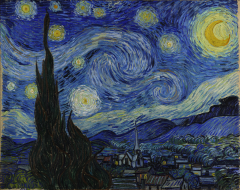
|
Vincent Van Gogh, Starry Night, 1889, oil on canvas, Museum of Modern Art, New York City.
This painting was made May 1889, and Van Gogh was in a hospital for his depression. He used the blues to express his depression. |
|
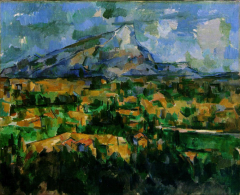
|
Paul Cézanne, Mont Sainte-Victoire, 1902-1904, oil on canvas, Philadelphia Museum of Art, Philadelphia, Pennsylvania.
Had inspiration from impressionists, and painted in a calculated block style, and he attempted to show different perspectives which came from Japanese culture. |
|

|
Paul Cézanne, Basket of Apples, c. 1895, oil on canvas, Art Institute of Chicago, Chicago, Illinois.
Used a subtle range of colors and ignores perspective from multiple angles. |
|

|
Paul Gauguin, Vision after the Sermon (Jacob Wrestling with the Angels), 1888, oil on canvas, National Gallery of Scotland, Edinburgh, Scotland. gave up his life as a stocks-broker to paint, and wanted to depict emotions. His paintings were about what we felt not what we see. Reference to Jacob wrestling God. |
|

|
Paul Gauguin, Where Do We Come From? Where Are We Going?, 1897, oil on canvas, Museum of Fine Arts, Boston, Massachusetts.
Moved to Tahiti and reveled in the Ash islands. This painting was symbolism for ones life cycle. The infant represents innocence, Tree source of knowledge, woman death, and the statue after life. |
|
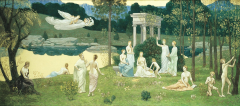
|
Pierre Puvis de Chavannes, Sacred Grove, 1884, oil on canvas, Art Institute of Chicago, Chicago, Illinois.
Sought to create art directly from the artist's mind. Was inspired by lingering romanticism. He used symbolism for analytical concepts. |
|
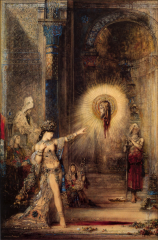
|
Gustave Moreau, The Apparition, 1874-1876, watercolor on paper, Musée du Louvre, Paris, France.
Traditional biblical scene of the dance of Goradomay, and was about the story of Solome. The head was an apparition of St. John's. |
|
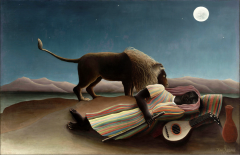
|
Henri Rousseau, Sleeping Gypsy, 1897, oil on canvas, Museum of Modern Art, New York City.
Used doll like figures and flat modeling form. Shows a sleeping gypsy as a lion passes by and shows the idea of mystery in creative expression and social status. |
|
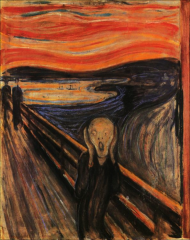
|
Edvard Munch, The Scream, 1893, tempera and pastels on cardboard, National Gallery, Oslo, Norway.
Has to do with psychology, and the "Tende cin Claire," French for end of the century. Has a sense of introspection, anxiety, and self examination. |
|
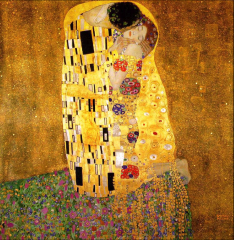
|
Gustav Klimt, The Kiss, 1907-1908, oil on canvas, Österreichische Galerie Belvedere, Vienna, Austria. |
|
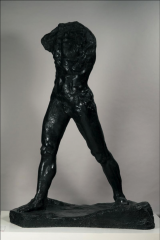
|
Auguste Rodin, Walking Man, 1905, bronze, Musée d’Orsay, Paris, France |
|
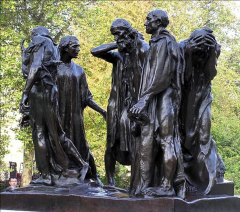
|
Auguste Rodin, The Burghers of Calais, 1884-1889, bronze, Victoria Tower Gardens, London, England (Original Cast Parc Richelieu, Calais, France). |
|

|
Henri Matisse, Le Bonheur de Vivre (The Joy of Living), 1905-1906, oil on canvas, Barnes Foundatino, Philadelphia, Pennsylvania. |
|
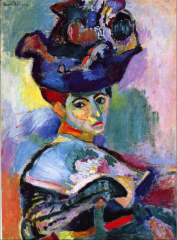
|
Henri Matisse, Woman with the Hat, 1905, oil on canvas, San Francisco Musuem of Modern Art, San Francisco, California. |
|
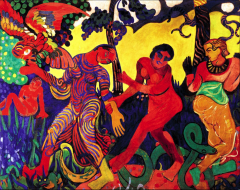
|
André Derain, The Dance, 1906, oil on canvas, Fridart Foundation, London, England. |
|
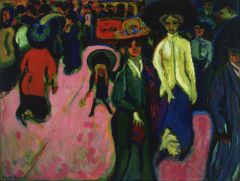
|
Ernst Kirchner, Street, Dresden, 1908, oil on canvas, Museum of Modern Art (MOMA), New York City. |
|
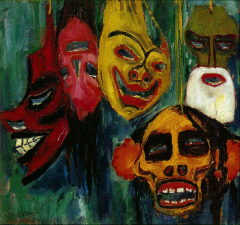
|
Emil Nolde, Masks, 1911, oil on canvas, Nelson-Atkins Museum of Art, Kansas City, Missouri. |
|
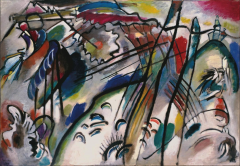
|
Vassily Kandinsky, Improvisation 28, 1912, oil on canvas, Solomon R. Guggenheim Museum, New York City. |
|

|
Franz Marc, Fate of the Animals, 1913, oil on canvas, Kunstmuseum Basel, Basel, Switzerland. |
|
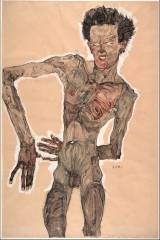
|
Egon Schiele, Nude Self-Portrait, Grimacing, 1910, gouache watercolor and pencil on paper, Albertina, Vienna, Austria. |
|

|
Pablo Picasso, The Old Guitarist, 1903, oil on canvas, Art Institute of Chicago, Chicago, Illinois. |
|
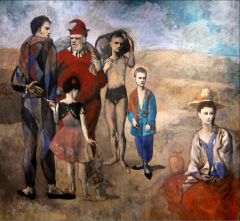
|
Pablo Picasso, Family of Saltimbanques, 1905, oil on canvas, National Gallery of Art, Washington, D.C. |
|
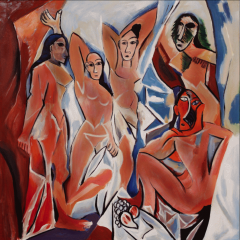
|
Pablo Picasso, Les Demoiselles d’Avignon, 1907, oil on canvas, MOMA, New York City. |
|
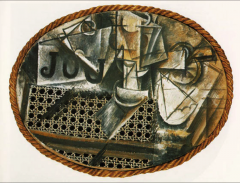
|
Pablo Picasso, Still Life with Chair-Caning, 1912; oil, oilcloth, and rope on canvas; Musée Picasso, Paris, France. |
|
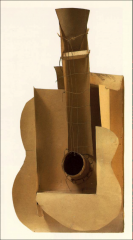
|
Pablo Picasso, Guitar, 1912; cardboard, string, and wire; MOMA, New York City. |
|
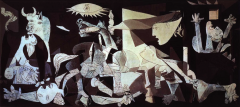
|
Pablo Picasso, Guernica, 1937, oil on canvas, Museo Nacional Centro de Arte Reina Sofia, Madrid, Spain. |
|
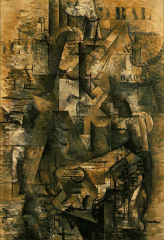
|
Georges Braque, The Portuguese, 1911, oil on canvas, Kunstmuseum Basel, Basel, Switzerland. |
|
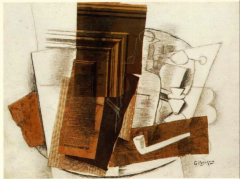
|
Georges Braque, Bottle, Newspaper, Pipe, and Glass, 1913; charcoal and various papers pasted on paper; Private Collection, New York City. |

